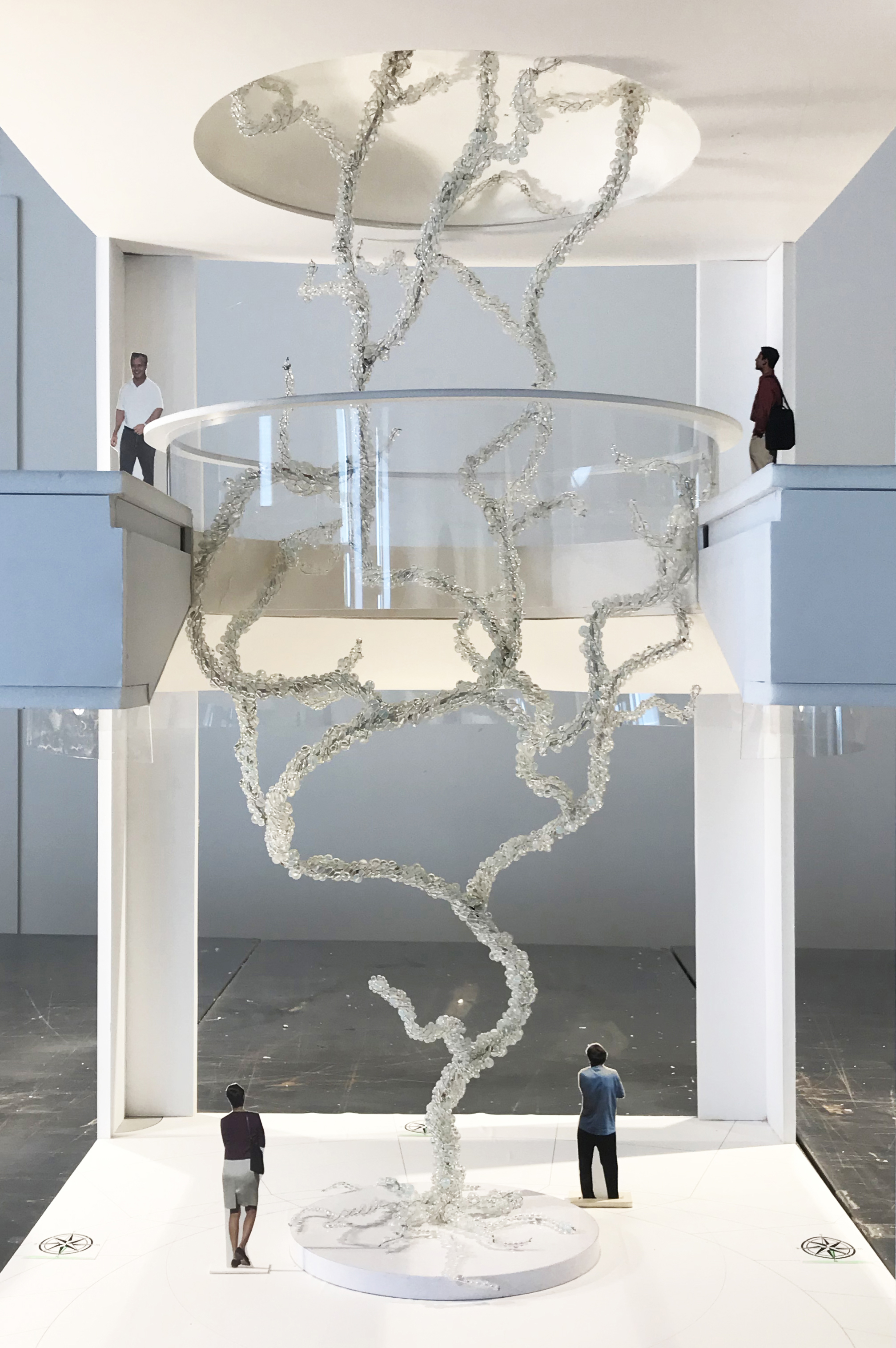Lin’s acclaimed work has been featured at museums and galleries around the world. Since her very first highly acclaimed work, the Vietnam Veterans Memorial in Washington, D.C., completed in 1982, Lin has gone on to a remarkable career in both art and architecture. A committed environmentalist, Lin’s architecture has consistently focused on sustainable design solutions and sensitivity to site and adaptive reuse and her artworks have asked the viewer to pay closer attention to the natural world. Now, she’ll work with Penn Medicine to bring hope and inspiration to patients. Drawing inspiration from the shape of DNA, the extending branches of a tree, and a map of the Philadelphia-area landmark, the Schuylkill River, “DNA Tree of Life” connects nature and medical science, representing life within the hospital, and within the city.
“My approach to this piece is to create something that is uplifting, that has a sense of wonder and beauty,” Lin said. “I want to make you aware of your surroundings in the Pavilion, in this beacon of scientific advancement, connecting you to the physical and natural world around you while symbolizing the very essence of life—DNA.”
As patients enter the Pavilion, also known as HUP East, they will be greeted with Lin’s intricate art piece, displaying a hidden steel “tree structure.” The structure will be concealed with hundreds of glass beads that will reflect the sunlight that streams through the windows. In the 17-story building, the sculpture will be suspended from the ceiling, between the Connector Level—where patients and visitors navigate the HUP campus with bridges between HUP East, HUP West, and the Perelman Center for Advanced Medicine—and the ground floor of the hospital.
Art is a priority element of the Pavilion’s design. Working in partnership with art consultant Ivorypress, an art committee comprised of experts and art advocates across the University of Pennsylvania, the Penn arts community, and Penn Medicine, have been providing their expertise and recommendations on the artistic and architecture features to enhance an environment designed to promote healing. Additionally, the committee is prioritizing artwork which is reflective of not only the Philadelphia community, but of Penn Medicine’s global reach.
“Art and design can be a transformational element of a patient’s experience. It was important to select pieces for HUP East that will convey a sense of peace and healing in this new landmark for exemplary care, as well as a welcoming, vibrant atmosphere for our patients, families, and staff,” said Regina Cunningham, PhD, RN, Chief Executive Officer of the Hospital of the University of Pennsylvania. “Maya Lin thoughtfully designed a sculpture that connects the fundamental elements of life and science to our health system and the Philadelphia community, and we look forward to its installation as we prepare to open the doors of our new patient pavilion.”
Lin’s “DNA Tree of Life” will be installed before the Pavilion opens in October 2021.
###
Penn Medicine is one of the world’s leading academic medical centers, dedicated to the related missions of medical education, biomedical research, and excellence in patient care. Penn Medicine consists of the Raymond and Ruth Perelman School of Medicine at the University of Pennsylvania (founded in 1765 as the nation’s first medical school) and the University of Pennsylvania Health System, which together form a $8.6 billion enterprise.
The Perelman School of Medicine has been ranked among the top medical schools in the United States for more than 20 years, according to U.S. News & World Report’s survey of research-oriented medical schools. The School is consistently among the nation’s top recipients of funding from the National Institutes of Health, with $494 million awarded in the 2019 fiscal year.
The University of Pennsylvania Health System’s patient care facilities include: the Hospital of the University of Pennsylvania and Penn Presbyterian Medical Center—which are recognized as one of the nation’s top “Honor Roll” hospitals by U.S. News & World Report—Chester County Hospital; Lancaster General Health; Penn Medicine Princeton Health; and Pennsylvania Hospital, the nation’s first hospital, founded in 1751. Additional facilities and enterprises include Good Shepherd Penn Partners, Penn Medicine at Home, Lancaster Behavioral Health Hospital, and Princeton House Behavioral Health, among others.
Penn Medicine is powered by a talented and dedicated workforce of more than 43,900 people. The organization also has alliances with top community health systems across both Southeastern Pennsylvania and Southern New Jersey, creating more options for patients no matter where they live.
Penn Medicine is committed to improving lives and health through a variety of community-based programs and activities. In fiscal year 2019, Penn Medicine provided more than $583 million to benefit our community.


